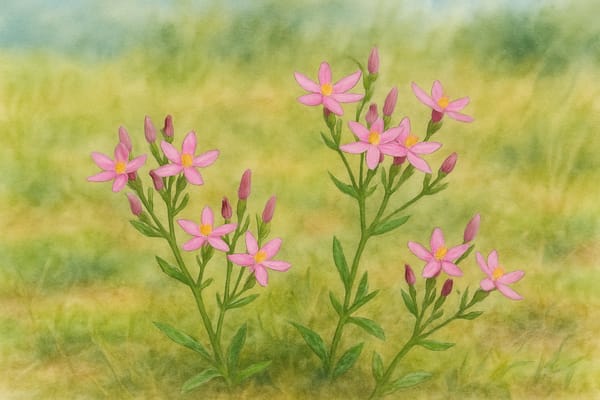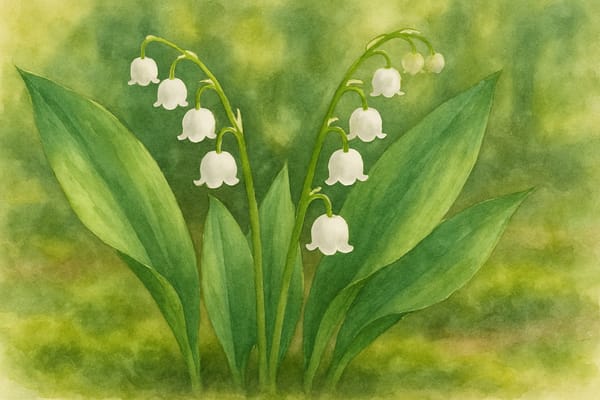A Timeless Symbol of Rural Beauty and Biodiversity
Historical and Cultural Significance
The Ox-Eye Daisy (Leucanthemum vulgare) is a familiar and beloved wildflower across Cornwall and the UK, notable not just for its cheerful presence in meadows and field edges but for its deep-rooted associations with folklore, love, resilience, and cultural memory.
- Folklore and Symbolism: Linked to the Greek goddess Hera and Diana, the goddess of the moon, the Ox-Eye Daisy has been known by many names—"Moon Daisy," "Moonpenny," and "Maudlin Daisy." It symbolises innocence, purity, and new beginnings. The petal-plucking rhyme "He loves me, he loves me not" is traditionally associated with this flower, contributing to its romantic folklore.
- Local Traditions: In rural Cornwall, young women would place daisies under their pillows to dream of their future husband. The flower also played a role in midsummer festivities and represented the fleeting beauty of summer.
- Historical Uses: It was dedicated to Mary Magdalene in Christian lore and served as a personal emblem of Margaret of Anjou during the Wars of the Roses. In folk medicine, it was used for respiratory complaints, digestive issues, and wound care. It even found agricultural use, with its sap used as a flea repellent in animal bedding.
- Literary Influence: With its wide, moon-like face and glowing white petals, the Ox-Eye Daisy features frequently in poetry, art, and songs celebrating the British countryside.
Ecological Role in Traditional Landscapes
- Pollinator Support: A crucial nectar and pollen source for bees, butterflies, hoverflies, and beetles, especially valuable for its long flowering season from spring through early autumn.
- Biodiversity: Acts as a host plant for butterfly and moth larvae and offers shelter and food for birds and small mammals, contributing to the overall health of traditional field margins and meadows.
- Soil and Slope Protection: With a deep, fibrous root system, it stabilises soil and reduces erosion—important for Cornwall's coastal and sloped terrain.
- Pioneer Species: Thrives in disturbed or poor soils, helping restore degraded habitats and laying the groundwork for more complex plant communities.
Growing and Caring for Ox-Eye Daisy in Coastal Gardens
The Ox-Eye Daisy is ideal for low-maintenance, pollinator-rich, coastal-style gardens.
Ideal Growing Conditions
| Factor | Recommendation |
|---|
| Light | Full sun preferred; partial shade tolerated |
| Soil | Well-drained, sandy or loamy, slightly acidic to neutral |
| Moisture | Moist to establish; drought-tolerant once mature |
| Exposure | Suited to coastal winds and salt-laden air |
| Hardiness | Highly frost hardy; ideal for UK coastal and inland settings |
Practical Care Tips
- Sowing: Direct sow in spring or autumn. Lightly cover seeds with soil and keep moist until germination.
- Self-Seeding: Let mature flowers set seed for self-sustaining displays.
- Cutting Back: Trim after flowering to encourage reblooming or leave seed heads for birds.
- Division: Divide clumps every few years in spring or autumn to rejuvenate.
- Pests and Diseases: Rarely troubled; ensure good air flow and avoid overly rich soils.
Wildlife and Companion Planting
- Pollinator Magnet: Especially attractive to bees, hoverflies, and butterflies.
- Best Companions: Pairs beautifully with thrift, cornflower, field scabious, and poppies in meadow-style plantings.
Quick Reference Summary: Ox-Eye Daisy at a Glance
| Aspect | Details |
| Cultural Significance | Romance, midsummer, folklore, Christian and royal symbolism |
| Soil | Well-drained, sandy/loamy, slightly acidic to neutral |
| Sunlight | Full sun to light shade |
| Coastal Suitability | Excellent; wind and salt tolerant |
| Wildlife Value | High: supports many insects, birds, and beneficial invertebrates |
| Maintenance | Low; cut back post-flowering and divide every few years |
Final Note
More than just a wildflower, the Ox-Eye Daisy is a cultural emblem and ecological workhorse, quietly holding together the fabric of traditional British landscapes. Its charm and resilience make it a perfect ambassador for coastal and meadow gardens that seek to celebrate heritage, sustainability, and natural beauty.











